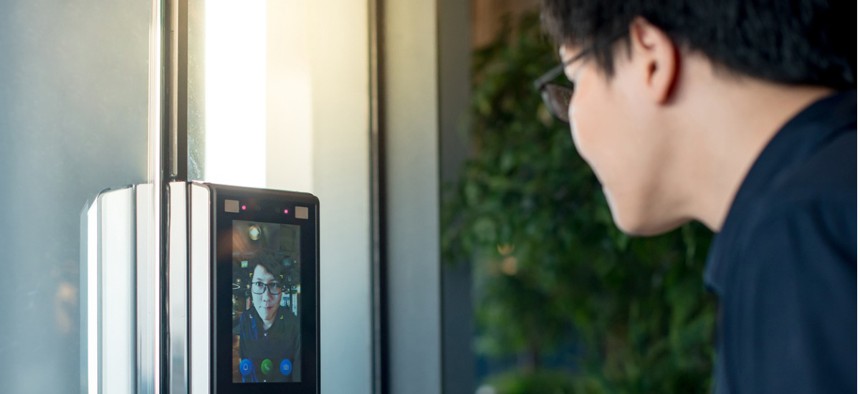Facial Recognition Tech Use Increasing Among Federal Agencies

Zephyr18/istockphoto
Use cases included criminal investigations, building security and access to digital assets like smartphones and security agency websites.
Three-quarters of large federal agencies are using at least one facial recognition technology within their departments, with more implementations on deck to deploy through 2023, according to a new report from the Government Accountability Office.
The Congressional watchdog’s survey of the 24 largest federal agencies showed 18 agencies had deployed some kind of facial recognition technology in 2020.
Instances reported to GAO spanned the full range of use cases, including:
- Six agencies that use facial recognition in criminal investigations, whether for identifying suspects using mugshot databases or, “In some cases, agencies identify crime victims, such as exploited children, by using commercial systems that compare against publicly available images, such as from social media,” the report states.
- Five agencies that use facial recognition for physical security, either for granting access at checkpoints or through images captured through video surveillance and matched against a watchlist.
- The most widely-used implementation of facial recognition—used at 16 agencies—was for cybersecurity, including digital access to government-issued smartphones and other devices. Two agencies reported using facial recognition to grant access to secure federal websites.
Agencies reported using a variety of facial recognition methods, including verification—whereby the technology is used to confirm a person is who they claim to be, such as by taking a photo and matching it to a passport or driver’s license image—and identification—attempting to determine who a person is by matching an image against a database of photos.
The report also covers technologies used for facial detection, which can be used to determine whether there is a person in an image and how many but does not attempt to identify people.
Of the 18 agencies that used facial recognition in 2020, 17 either owned the system—built in-house or purchased commercial technology—or accessed a system owned by another federal agency. Three agencies reported accessing systems owned by state and local government entities, and six used systems owned and operated by commercial vendors, including Clearview AI, Vigilant Solutions and Acuant FaceID.
The GAO report includes a table breaking down the number of facial recognition systems owned by each agency:
- Commerce Department: one system, used for physical security.
- Defense Department: seven systems, used for physical security, domestic law enforcement, national security and defense, and other purposes.
- Energy Department: one system, used for physical security.
- Health and Human Services Department: three systems, used for physical security, domestic law enforcement and digital access/cybersecurity.
- Homeland Security Department: four systems, used for domestic law enforcement, border and transportation security, and national security and defense.
- Justice Department: seven systems, used for physical security, domestic law enforcement, national security and defense, and other purposes.
- State Department: one system, used for border and transportation security, and national security and defense.
- General Services Administration: one system, used for digital access/cybersecurity.
- NASA: one system, used for “other” purposes, including employee identification if they forgot their badges.
Six agencies reported not using any facial recognition technology in 2020, including: the Education, Housing and Urban Development, Labor and Transportation departments, and the Nuclear Regulatory Commission and Small Business Administration.
However, while not deployed, the Transportation Department did report conducting facial recognition technology research that year.
Overall, 10 agencies reported doing research on new or advanced facial recognition techniques, such as identifying people wearing masks during the COVID-19 pandemic.
The use of facial recognition is on track to expand throughout government, the report notes, with 10 agencies stating they have active plans to deploy additional use cases through 2023.
Meanwhile, lawmakers are considering several bills that would put a moratorium on government uses of facial recognition, including those already deployed. Some legislation targets specific use cases—such as banning the Housing and Urban Development Department from using the tech in public and assisted housing—while others, like the Facial Recognition and Biometric Technology Moratorium Act, would institute a ban governmentwide.






